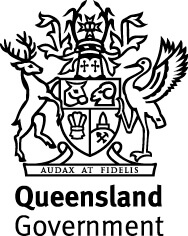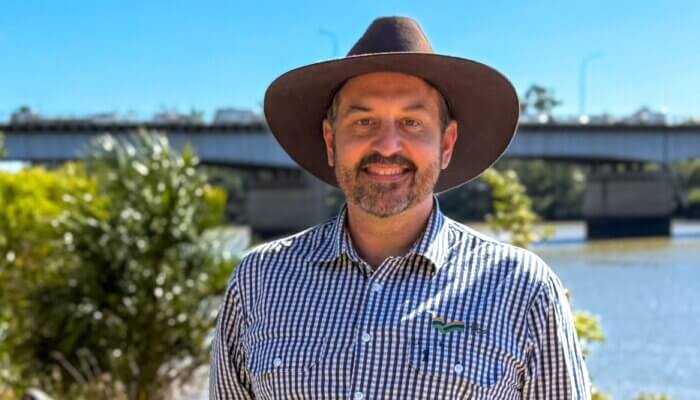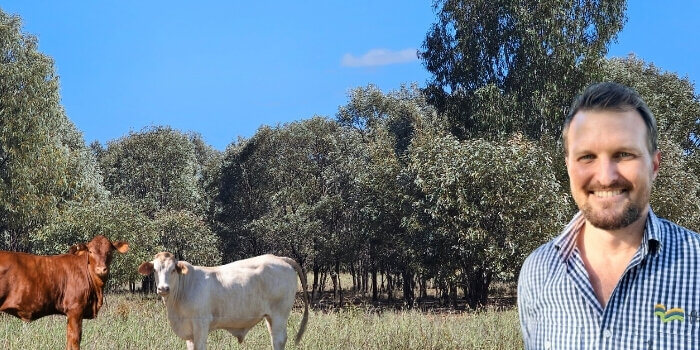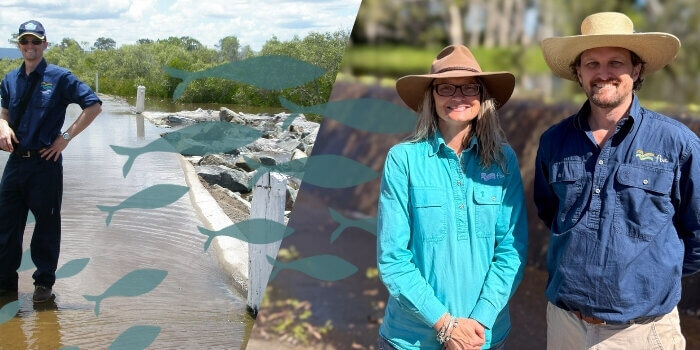
Reef Water Quality Report Card 2021 and 2022
Posted on July 9th, 2024
The Reef Water Quality Report Card measures progress towards the Reef 2050 Water Quality Improvement Plan (Reef 2050 WQIP) targets and objectives, up to June 2022.
While climate change remains the greatest threat to the Reef, improving the quality of water flowing from the land to the sea is critical to reducing additional pressures and supporting the Reef’s health and resilience.
Results show there is continued progress towards the water quality targets, mostly for particulate nutrients, with slower progress towards the dissolved inorganic nitrogen and fine sediment targets.
The 2021 and 2022 report card was released in May 2024 and it assesses the results of Reef 2050 WQIP actions up to June 2022.
Explore the Reef Water Quality Report Card 2021 and 2022 results in full here.
You can view results for the Fitzroy region here.
Ground cover
Improvements in ground cover across the Fitzroy region are being celebrated following the recent release of the Reef Water Quality Report Card 2021 and 2022.
Ground cover improved from moderate in 2021 to very good in 2022, meeting the target, with 94 per cent of grazing lands having more than 70 per cent ground cover in the late dry season of 2022.
FBA Adoption Manager Daniel Boshoff said this improvement was in part reflective of the hard work of land managers, and a response to the higher than long-term average rainfall in 2022.
“The Fitzroy region land managers are really supportive of the environmental initiatives in the catchment, and they do their bit to make sure the impact is reduced,” Mr Boshoff said.
“Improving the impacts on their properties normally has a positive impact on their business as well, so it is a win-win scenario.”
Catchment pollutant loads
Mr Boshoff said the Fitzroy is the largest river catchment that drains into the World Heritage listed Great Barrier Reef, delivering significant amounts of fine sediment to the Reef each year.
“This impacts the water quality not only in the Reef lagoon but also the river system,” he said.
“Most resources were aimed at reducing the sediment by stabilisation of gullies and streambanks and supporting land managers to improve ground cover. It is good to see that the effort that FBA has put into improving these targets has paid off.”
There was a 1.4 per cent reduction in the annual average load of fine sediment from the Fitzroy region in 2021 and 2022 (11.7 per cent reduction to date – 25 per cent target).
There was a 1.9 per cent reduction in particulate nitrogen (7.7 per cent reduction to date – 15 per cent target) and a 1.6 per cent reduction of particulate phosphorus (11.1 per cent reduction to date – 20 per cent target).
The pesticide risk condition indicates 94.4 per cent of aquatic species were unlikely to experience harmful effects from pesticides in 2022 with a fall of 1.6 per cent from 2021 (96 per cent of aquatic species protected).
Mr Boshoff said these results were an indication that the region is heading in the right direction.
“The Fitzroy region is massive and working closely with the people that manage the land is where the change lies,” he said.
“FBA works closely with land managers across the region. The work to reduce fine sediment reaching the Reef is of great interest to the communities and people in the region.
“A significant amount of sediment reduction work has taken place since the 2021 and 2022 report card, and we are eager to see the results recognised in the next report card.”
Inshore marine condition
The report card shows inshore marine condition declined to poor, sea-surface temperature was above average, but heat stress was not as severe as in the northern parts of the inshore Reef.
Inshore coral remained in poor condition with a decline to poor in juvenile coral.
Mr Boshoff said there are many factors that impact inshore marine condition, with three main indicators being coral health, seagrass species and water quality.
“The sediment run off from the Fitzroy causes increased turbidity, making the water appear cloudy or muddy, and can result in increased water temperatures,” Mr Boshoff said.
“The increase in water temperatures in the shallow inshore marine environment impacts the seagrass species and coral health. The changes in climate that cause temperature spikes and more frequent heat waves, and frequent flooding as a result of abnormal rainfall events, are directly linked to the impacts that were noted in this report card.
“There is no quick fix for this, but efforts are underway to give the seagrass and coral populations the best opportunity to survive.
“It’s a community wide approach where we all reduce our impacts on the Reef. For example, be mindful of what is poured into stormwater systems, improve ground cover if you have a grazing property and support volunteer programs for seagrass seed collection or waste removal in marine environments.”
Seagrass
Seagrass condition remained poor in this report card and Mr Boshoff said he expects to see improvement in this space in the next few years.
“FBA initiated a seagrass restoration project during the reporting period and the project won the Reef Community Champion Award in 2022.
“The Seagrass Restoration Project was coordinated by Fitzroy Basin Association (FBA) with funding from the Australian Government’s National Landcare Program.
“Partnering with CQ University Australia’s Coastal Marine Ecosystems Research Centre, Woppaburra TUMRA, Konomie Island Environmental Education Centre and community members.
“Huge efforts have been made to restore or reinstate seagrass meadows and we are confident that with the ongoing efforts in this space, an improvement of the seagrass meadows may be noted.”
The report card outlines results from the Paddock to Reef Integrated Monitoring, Modelling and Reporting Program. In the future, the Reef 2050 Integrated Monitoring and Reporting Program will provide a comprehensive understanding of how the broader Reef 2050 Long-Term Sustainability Plan is progressing.
FBA is committed to improving water quality throughout the region and the health of the Great Barrier Reef in line with the organisation’s strategy and many programs.
The Paddock to Reef Regional Engagement project is supported/delivered by Fitzroy Basin Association and funded by the Australian and Queensland governments’ Paddock to Reef Integrated Monitoring, Modelling and Reporting Program.












